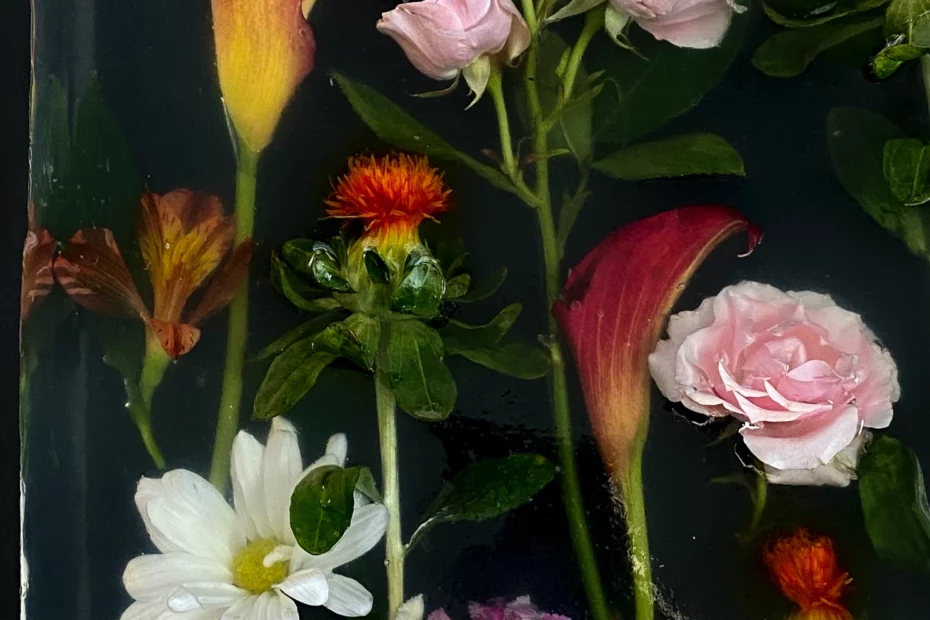After the interesting Article in the FAZ am Sonntagwhere many rosés from Living wines recommended, I thought I would also express my opinion on the subject of "rosé wines".
Just a few days ago I served some of these "divisive" wines during a wine club and the ensuing discussion was really interesting. I provoked a little and asked our guests what they thought made a Rosé wine constitutes.
It's interesting: the first approach was to define what it is not. It's not as fresh as a white wine, not as heavy as a red wine. Well, a good start.
Some suggested that they don't normally drink rosé wine. Well, that is of course a matter of taste and a question of colour harmony.
A man told me that in France rosé wines are often called "vin du piscine" and are drunk copiously with ice by the pool. After all the White wine spritzersthat I have seen in recent years, nothing can really surprise me any more.
I could quote a few more sentences, but the main point is already clear: rosé wines are not wines to be taken seriously. They only gain some prestige for a few summer months, like a group of shooting stars in the firmament of "real" wines. I'm not the first to say this, but it seems we have to repeat it more often: It's not true! There are many great rosé wines out there.
Before I share my impressions of some of the wines in our selection with you, I would like to come back to the question I asked at the beginning: What makes a wine a rosé wine?
Maybe we'll find out why so many people think rosé is a kind of simple, summer-only wine.
Color
We classify wines according to their colour: white, red, rosé and orange. But colours already have their meanings. Rosé (pink) is mainly associated with the feminine. Personally, I am against the use of "feminine" and "masculine" to define wines, but how many times have I heard that rosé wines are most popular with women? Some wineries even emphasise this in their advertising. The wine world is not immune to patriarchy and all its stereotypes. If the wine is pink, it's a girl's wine. And if it's something for girls, it must be lighthearted, simple, easy(sensible), etc. It's time to put an end to these stereotypes. Both for women and for wines. Look into your glass and you will see a palette that ranges from pale pink to a delicate salmon tone to an intense, almost red colour.
Scent
If you don't serve your rosé ice cold or with ice cubes, you are likely to discover a wide variety of bouquets. Sometimes more subtle, sometimes very intense. The temperature changes while your wine is in the glass, and so do the aromas. Try to find the right temperature for your wine.
Taste
Similar to smell, the palate needs the right temperature to explore the full range of flavours in a glass of wine. And "ice cold" is not always the right one. I find it very interesting to analyse the texture, the consistency of the liquid. I've had some great surprises in that sense with rosé wines. I have found myself in Les Vignes Métissés by Roc des Anges mainly because of its wonderfully delicate, silky texture, to name just one example.
Technical
If you press any grape, the juice will be white. The colour comes from the time it spends in contact with the grape skins. Press a white grape and immediately remove the skins: you have a white wine. Do it again, but leave the skins in contact for a few days or even months: Orange-Wine. Now take your red grape, press it and take away the skins: white wine again! (In Champagne they would call it Blanc de Noirs). Leave the red skins there for a few days: red wine. Now try to be quicker and leave the juice extracted from red grapes in contact with the skins for only a few hours: finally your rosé wine.
The Pinot Noir you love so much when used for some top Burgundies can also be used for some rosés. And there are winemakers who take this process very seriously. There is a world to discover without prejudice. Let us begin.
Château de Pibarnon Rosé AOC 2022
The wine-growing region of Bandol, where Château de Pibarnon is located, is the rosé region par excellence. Bandol is one of the villages on the French Riviera, in Provence. The Mediterranean climate guarantees warm growing conditions for the grapes, while the mountains serve as protection from the cold winds.
This blend of Mourvèdre and Cinsault immediately reveals all its power already on the nose. Ripe stone fruits, pear and lemon zest are brought together by some creamy, almost sweet notes of vanilla and spices. The creamy, juicy feel continues on the palate as tannins and spices dance on the tongue.
This is a complex, serious wine. Its long finish will put you in a peaceful meditative state while you smile at the horizon.
Pranzegg
MIAU! Vino Rosato Frizzante 2022
In South Tyrol, Pranzegg is already attracting attention with this rosé through its name... When you open this Pét-Nat, you will embrace your close friend and start dancing, just like the two cats on the label.
The colour is an intense pink/light red, with silky cloudiness that shows its unfiltered nature. The foam is generous and loud. The first nose brings hints of hay, followed by a rich bouquet of flowers, green apples and a fresh alpine breeze that constantly swirls the aromas. In the mouth, it is generous and fresh, moving between the crispness of the green apple and the juicy lushness of the strawberries.
Attention! The bottle will empty quickly.
I Vigneri di Salvo Foti
Vinudilice Rosato 2021
Salvo Foti really needs no introduction. He is one of the protagonists of the renaissance of Sicilian wine, especially on Mount Etna. This rosé confirms the connection to tradition and the land that characterises his "I Vigneri" are typical.
The wine is a blend of at least 10 different grapes, red and white, all growing together and harvested and pressed together. This mixed harvest was common in several areas of Italy in the past.
The colour is salmon pink, with shiny crystalline reflections. The nose is an endless journey between black cherries, wild berries, oranges, aromatic herbs, spices and the seductive minerality that only the volcanic soil can provide. The palate is fresh, precise and clear. Perfectly integrated acidity and a lovely saltiness form the lively backbone of this wine. Any further description would only disturb the connection to the soul of Sicily...
An unexpected, unique rosé wine.
Here you will find the entire Rosé wine Assortment
FROM LIVING WINES
Text: Jonathan Gobbi
Photo Credits:
Various colourful flowers in plastic container with water: Jill Burrow / Pexels




